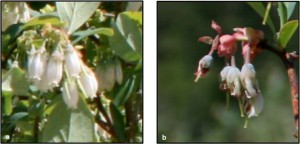Flowers Impact Bee Foraging in Blueberries
go.ncsu.edu/readext?304034
en Español / em Português
El inglés es el idioma de control de esta página. En la medida en que haya algún conflicto entre la traducción al inglés y la traducción, el inglés prevalece.
Al hacer clic en el enlace de traducción se activa un servicio de traducción gratuito para convertir la página al español. Al igual que con cualquier traducción por Internet, la conversión no es sensible al contexto y puede que no traduzca el texto en su significado original. NC State Extension no garantiza la exactitud del texto traducido. Por favor, tenga en cuenta que algunas aplicaciones y/o servicios pueden no funcionar como se espera cuando se traducen.
Português
Inglês é o idioma de controle desta página. Na medida que haja algum conflito entre o texto original em Inglês e a tradução, o Inglês prevalece.
Ao clicar no link de tradução, um serviço gratuito de tradução será ativado para converter a página para o Português. Como em qualquer tradução pela internet, a conversão não é sensivel ao contexto e pode não ocorrer a tradução para o significado orginal. O serviço de Extensão da Carolina do Norte (NC State Extension) não garante a exatidão do texto traduzido. Por favor, observe que algumas funções ou serviços podem não funcionar como esperado após a tradução.
English
English is the controlling language of this page. To the extent there is any conflict between the English text and the translation, English controls.
Clicking on the translation link activates a free translation service to convert the page to Spanish. As with any Internet translation, the conversion is not context-sensitive and may not translate the text to its original meaning. NC State Extension does not guarantee the accuracy of the translated text. Please note that some applications and/or services may not function as expected when translated.
Collapse ▲Just in time for Pollinator Week, I wanted to share another update on our work on pollinators in blueberries. While grad student Shelley Rogers and technician Kevin Littlejohn were collecting data on which bees are the “best” blueberry pollinators and whether bee diversity influences pollination, they observed some interesting differences in foraging patterns between some varieties of rabbiteye blueberries.
Rabbiteye blueberries represent about 20% of NC acreage and flower and fruit later in the growing season than southern highbush, which are the majority of blueberries grown in NC.
A popular rabbiteye variety, Premier, can have abnormally shaped flowers with shorten corollas as compared to other rabbiteye varieties.

Typical rabbiteye blueberry flowers (left) and malformed Premier flowers (right). Photos: Shelley Rogers
Interestingly, it appeared that more honey bees were present at Premier flowers than at other rabbiteye varieties. Shelley and Kevin then conducted time observations of individual plants of Premier and non Premier varieties over two years to determine if this observation was correct.
They found that, on average, 19 honey bees visited Premier plants in 15 minutes, while only 5 honey bees visited other varieties in the same time period. In addition, only 1 wild bee visited Premier plants in 15 minutes, but 10 wild bees visited visited other varieties.
We suspect that the malformation of Premier flowers may act similarly to carpenter bee slits on intact flowers, and that honey bees are taking advantage of easier access to nectaries.
It is unclear if these differences in foraging activity are problematic. Rabbiteye blueberries do benefit from cross pollination between varieties, so it is possible that if honey bees only forage on Premier flowers, cross pollination may be reduced. However, it is also possible that honey bees are able and willing to visit more Premier flowers, perhaps making them better single-visit pollinators.
We will be sharing the results of this project as a poster at the North American Blueberry Research and Extension Workers Conference in Atlantic City next week.
More information
View a copy of our poster.


